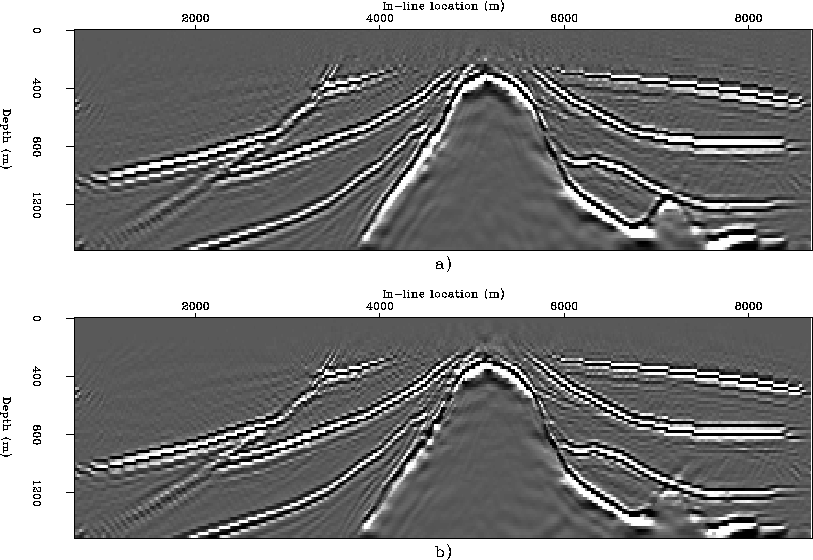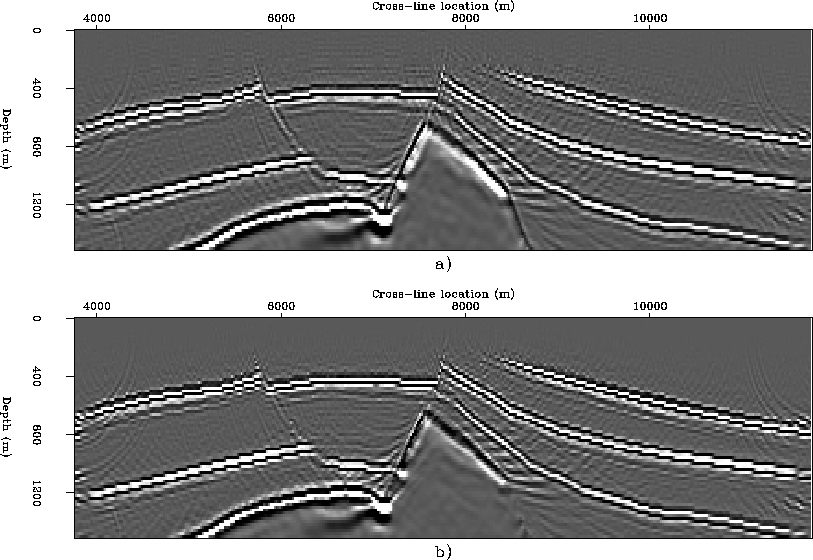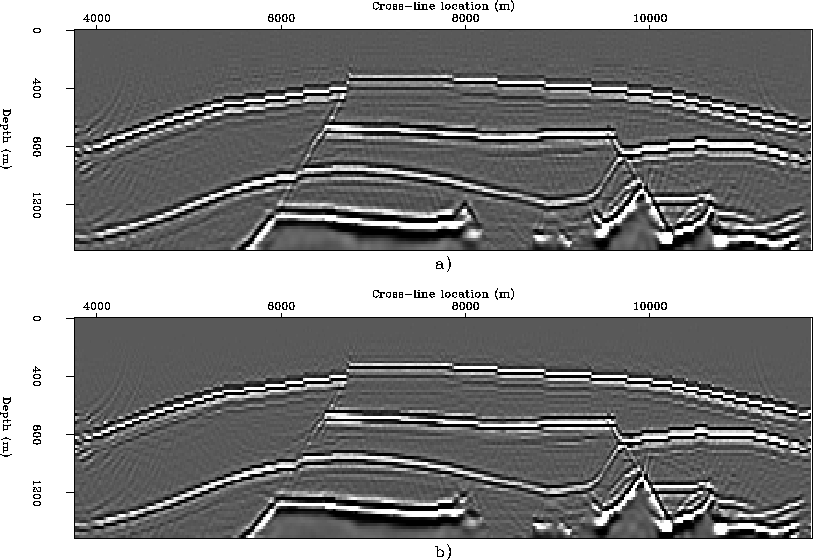 |
Figure 4 In-line sections (cross-line location 5,990 m) from the images obtained with a) common-azimuth migration (A), b) the hybrid offset plane wave migration (B).
The next four figures compare the upper portion (down to a maximum depth of 1,500 m) of two in-line sections and two cross-line sections obtained by migrations (A) and (B). Figure 4 compares the in-line sections obtained by common-azimuth migration (A) and the hybrid offset plane wave migration (B). Migration (B) fails to image properly segments of the two large faults above the salt body. The image degradation is larger for the lower parts of the faults, contrary to the expectations induced by the theoretical analysis presented in the previous section. The relatively small degradation of the shallower parts of the faults can be explained by the muting applied to the early arrivals in the data. This muting reduced the effective maximum offset of the early reflections and thus decreased the errors introduced by offset plane wave migration. Further investigations of this aspect of the results are warranted.
Figure 5 compares the in-line sections obtained by common-azimuth migration (A) and the hybrid offset plane wave migration (B). The left flank of the salt body is better imaged by migration (A) than by migration (B). Migration (B) fails also to focus properly the ridge on the top of the salt visible in panel a) at in-line location of about 7,000 m.
Figure 6 compares the cross-line sections obtained by common-azimuth migration (A) and the hybrid offset plane wave migration (B). Both the right and left flank of the salt are better imaged by migration (A) than by migration (B). Migration (A) produces also a better image of the fault located at cross-line location of about 6,000 m
Figure 7 compares the cross-line sections obtained by common-azimuth migration (A) and the hybrid offset plane wave migration (B). Again, migration (B) fails to image the lower segment of the fault located at cross-line location of about 6,000 m, and the ridge on the top of the salt located at cross-line location of about 8,000 m. Notice that this is the same ridge visible in the in-line sections shown in Figure 5.
 |
 |
 |
 |